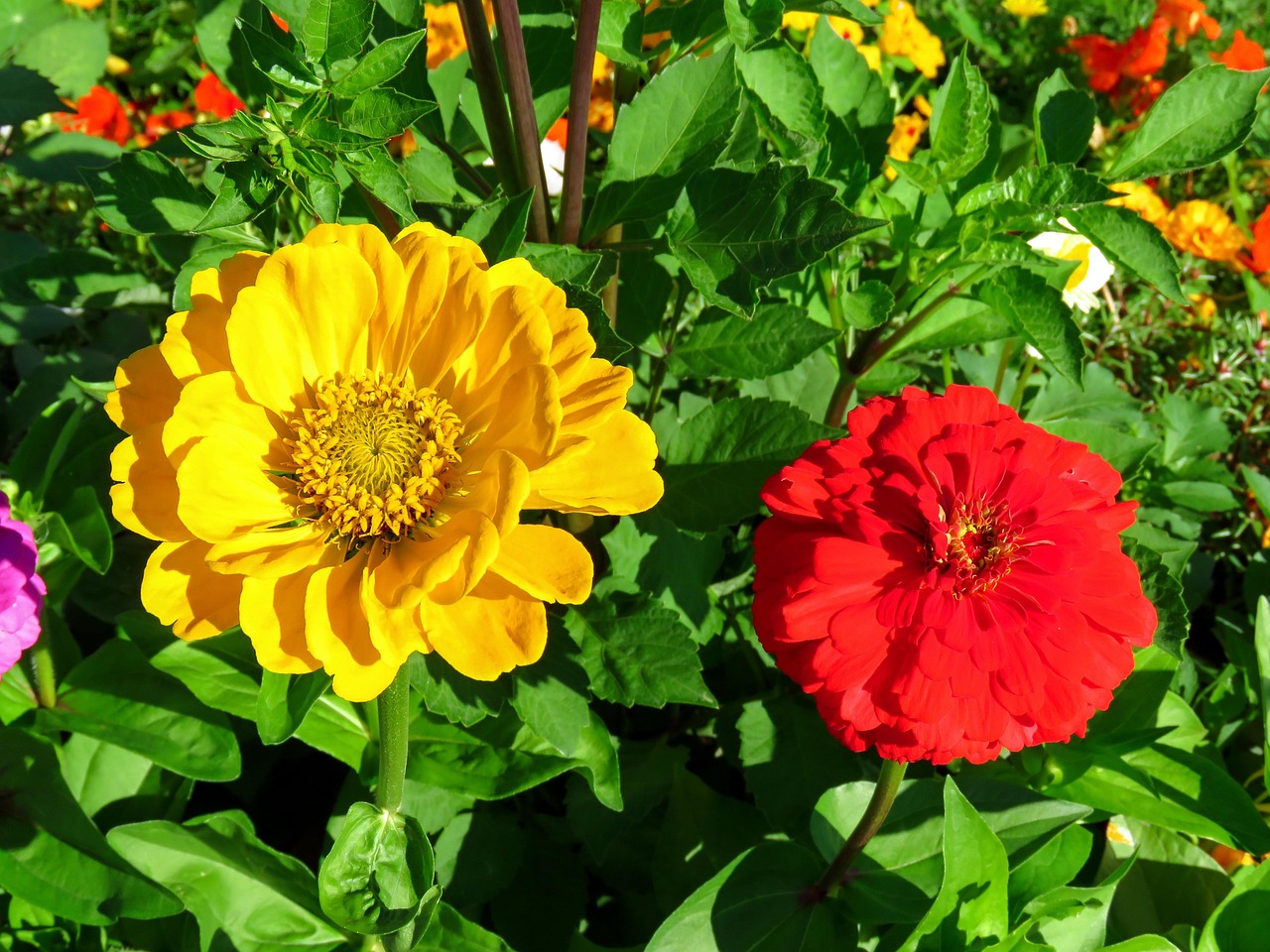
Most gardeners know zinnias as vibrant, cheerful additions to any flower bed. Their diverse colors, long bloom time, and ease of care make them a popular choice for creating a dazzling visual spectacle. But did you know that these captivating flowers offer more than just aesthetic appeal? Zinnias, it turns out, are surprisingly beneficial companions for your vegetable patch, offering a range of hidden advantages that can enhance your overall gardening experience.
Why You Should Plant Zinnias in Your Vegetable Garden
1. Pollinator Powerhouses: Attracting the Buzzing Brigade
One of the most surprising benefits of planting zinnias in your vegetable garden is their ability to attract a diverse array of pollinators. Bees, butterflies, hummingbirds, and other beneficial insects are drawn to the zinnia’s bright colors and nectar-rich blooms. This influx of pollinators plays a crucial role in your vegetable garden’s success. As these creatures flit from flower to flower, they inadvertently transfer pollen between plants, enabling the fertilization necessary for fruit and vegetable development. This translates to increased yields and a more bountiful harvest for you!
Beyond the Buzz: Don’t underestimate the impact of a vibrant zinnia patch. These cheerful flowers not only attract pollinators to your vegetables, but their presence also encourages beneficial predatory insects like ladybugs and lacewings. These natural pest controllers help keep harmful insect populations in check, reducing the need for harsh chemical pesticides and promoting a more sustainable gardening approach.
2. Natural Pest Deterrence: Keeping Unwanted Guests at Bay
While zinnias attract beneficial insects, they also possess a surprising ability to deter some unwanted garden guests. Their strong, aromatic foliage releases a natural compound that certain pests find distasteful. This includes common garden foes like aphids, whiteflies, and even rabbits. While not a complete repellent, planting zinnias strategically around your vegetable beds can create a less hospitable environment for these pests, discouraging them from taking up residence and feasting on your precious vegetables.
Companion Planting Power: Take advantage of zinnia’s pest-deterrent properties by planting them as companion plants alongside your vegetables. Interplanting rows of zinnias with your tomatoes, peppers, or eggplants can create a natural barrier, offering some protection against these common vegetable pests. Remember, the more diverse your garden ecosystem, the less susceptible it becomes to pest outbreaks.
3. Nutrient-Rich Mulch: A Secret Weapon for Soil Health
Zinnias aren’t just beautiful and beneficial while they’re alive; they also offer a hidden advantage even after their vibrant blooms have faded. Once the flowering season is over, instead of discarding the zinnia plants, consider chopping them up and using them as mulch around your vegetables. This organic matter decomposes slowly, releasing valuable nutrients back into the soil over time. This natural process helps improve soil fertility, providing your vegetables with the essential nutrients they need to thrive.
Bonus Tip: Don’t just limit yourself to zinnia stalks. Consider incorporating other plant materials like leaves and prunings from your garden into your mulch pile. This creates a richer, more diverse mulch composition that benefits your soil in various ways.
4. Natural Weed Control: Smothering the Competition
Zinnias, with their fast growth rate and dense foliage, can also act as a natural weed barrier in your vegetable garden. By planting them closely together, you create a living mulch that helps suppress weed growth. This not only reduces the time and effort you need to spend weeding, but it also prevents weeds from competing with your vegetables for vital resources like water, sunlight, and nutrients.
Strategic Seeding: To maximize the zinnia’s weed-suppressing potential, consider sowing seeds directly in your vegetable beds a few weeks before planting your vegetables. This allows the zinnias to establish themselves and create a dense cover before the weeds have a chance to take root. Remember to thin the zinnia seedlings once your vegetables are established to avoid competition for resources.
5. A Feast for the Eyes and the Soul: More Than Just Produce
While the primary focus of a vegetable garden is undoubtedly to grow delicious, healthy produce, there’s no denying the joy and satisfaction that comes from creating a beautiful and vibrant space. Planting zinnias amongst your vegetables adds a pop of color and cheerfulness, transforming your garden into a visually stimulating haven. This not only enhances the overall aesthetic of your outdoor space but also contributes to a more peaceful and calming environment.
Gardening as Therapy: Studies have shown that spending time in nature and tending to a garden can have significant positive effects on mental well-being. The combination of physical activity, mindfulness, and the beauty of nature can help reduce stress, improve mood, and even boost creativity. So, don’t underestimate the therapeutic benefits of incorporating vibrant zinnias into your vegetable garden.
